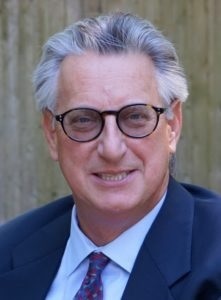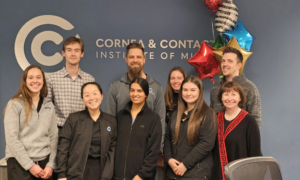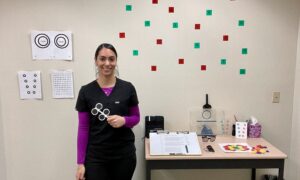By Roger Mummert
ROB Content Director

Nov. 6, 2019
In the Global Crisis in Eyecare, One Profession Takes the Lead
“Living in a bubble” is an oft-used phrase in these politically divided times. We tend to see and hear what like-minded people see and hear.
Well, the bubble of seeing eyecare only in national or local terms was loudly burst for anyone attending the combined 2019 Academy of Optometry Meeting and Third World Congress of Optometry in Orlando in October. Attendees, who reportedly numbered 8,000, wore suits, jeans, military uniforms, turbans, hijabs and saris. Conversations in Mandarin, Arabic and Hindi blended with those in English, Spanish and French.
But all attendees came for a common reason: to learn, to exchange knowledge and to address the world’s pressing need for eyecare.
In a plenary session, the global crisis in eyecare was laid out in the most stark terms: 2.2 billion people around the world suffer vision impairment. Much of that impairment is unaddressed, and an estimated 1 billion of those cases could have been prevented. Let that figure sink in: 2.2 billion people out of 7.7 billion worldwide are vision impaired and don’t see the world as well as they might. There is a startling gap in the delivery of the basic eyecare that can enable people to see to read, perform a job to make a living and lead meaningful lives. Worse, these conditions are increasing.
These figures are according to a recently published study: “World Report on Vision” by the World Health Organization.”
Barbara Caffery, OD, PhD, FAAO, president of the American Academy of Optometry, introduced the session. “You may think everyone in need of eyecare is in a faraway developing country, but that isn’t so,” she told the international audience of ODs in the room. “Many people in need also live on your street.”
INTERVIEW WITH DR. CAFFERY: Dr. Caffery granted ROB an in-depth video interview that will appear soon.
WHO Recommendations
World Health Organization
“World Report on Vision”
The report recommends a five-part action plan:
- Make eyecare an integral part of universal health coverage.
- Implement integrated people-centered eyecare in health systems.
- Promote high-quality implementation and health systems research complementing existing evidence for effective eyecare interventions.
- Monitor trends and evaluate progress toward implementing integrated people-centered eyecare.
- Raise awareness and engage and empower people and communities about eyecare needs.
The enormous challenge to meet the eyecare of the world was then presented as three basic questions: First, how do we define the problem and measure the extent of it? Second, what priorities should be set when resources are limited? Third, who will address this and how?
On the latter point, the consensus was clear: Addressing the global crisis in the delivery of eyecare is optometry’s role. Said simply: Optometry’s got this.
It won’t be easy. But, as Elizabeth Warren might say, we’ve got a plan for that.
Three speakers laid out the problem and the plan.
How Do We Define and Measure the Crisis?
“We ask ‘How could this happen?’ when we are a mature profession that can treat eye disease,” said Alarcos Cieza, MSc, MPH, PhD, of the World Health Organization. “Now we have no choice but to accept the challenge.” She pointed to 2.6 billion people with myopia (a figure expected to double by mid-century), 196 million with AMD, 146 million with macular degeneration and 146 million with diabetic retinopathy. Another 76 million have glaucoma and 2.5 million have trachomatous trichiasis, according to WHO. “These figures are difficult to compute,” she said,” but without data we cannot tell the story, and now we can “
She noted that eyecare delivery varies greatly by income levels across the globe. Unaddressed distance vision in low-income areas, for example, is four-times higher than in high-income areas. “Access is the problem, and for that we need three things: availability, accessibility and affordability.”
What Are the Priorities?
“Who should be prioritized when resources are limited” asked Kovan Naidoo, OD, PhD, FAAO, senior vice-president of Inclusive Business, Philanthropy and Social Impact at Essilor.
Other Articles to Explore
“We need to see this crisis as opportunity, not a challenge,” he said, calling for a combination of many companies and many ODs to engage in addressing worldwide needs. He called for optometry to be fully recognized as a medical profession and ODs not to be marginalized as a supplemental health workers
“Some will wage political battles over the recognition of optometry’s role, but it is essential to have a healthy sense of outrage. We need to talk scale, not just models,” he said, given the world epidemics of myopia and diabetes.
“We must adopt a systems approach and move the needle,” he said. “This will be about systems of information, technology, governance and health personnel working together and succeeding together.”
What is the Strategy?
Sandra Block, OD, M Ed, MPH, FAAO, FCOVD, serves as regional representative for North America for the World Health Organization. She provided a North American Response, beginning with the fact that the U.S. health care system is ranked 11th out of 11 high-income countries, with health care accounting for 17 percent of GDP, highest among cohorts (OECD Health Data).
Dr. Block outlined high rates of age-related eye disease and vision impairment, as well as pediatric conditions that require early diagnosis. Many of these eye conditions have co-morbidities, she underscored. And she called for eyecare to be an integral part of universal health coverage.
“We need coverage to be expanded so no one is not able to access quality comprehensive eyecare without worrying about the ability to cover the cost of care,” she said.
In closing, Dr. Block paused and looked out on a sea of optometrists from all corners of the world. Then she said something that I found, after 30-plus years of covering the profession of optometry, both astonishingly challenging and assuredly doable by the optometrists I know and admire: “I look forward to seeing you all do great things!”
 Roger Mummert is Editorial Director of Review of OPtometric Business. Contact: rmummert@jobson.com
Roger Mummert is Editorial Director of Review of OPtometric Business. Contact: rmummert@jobson.com



























